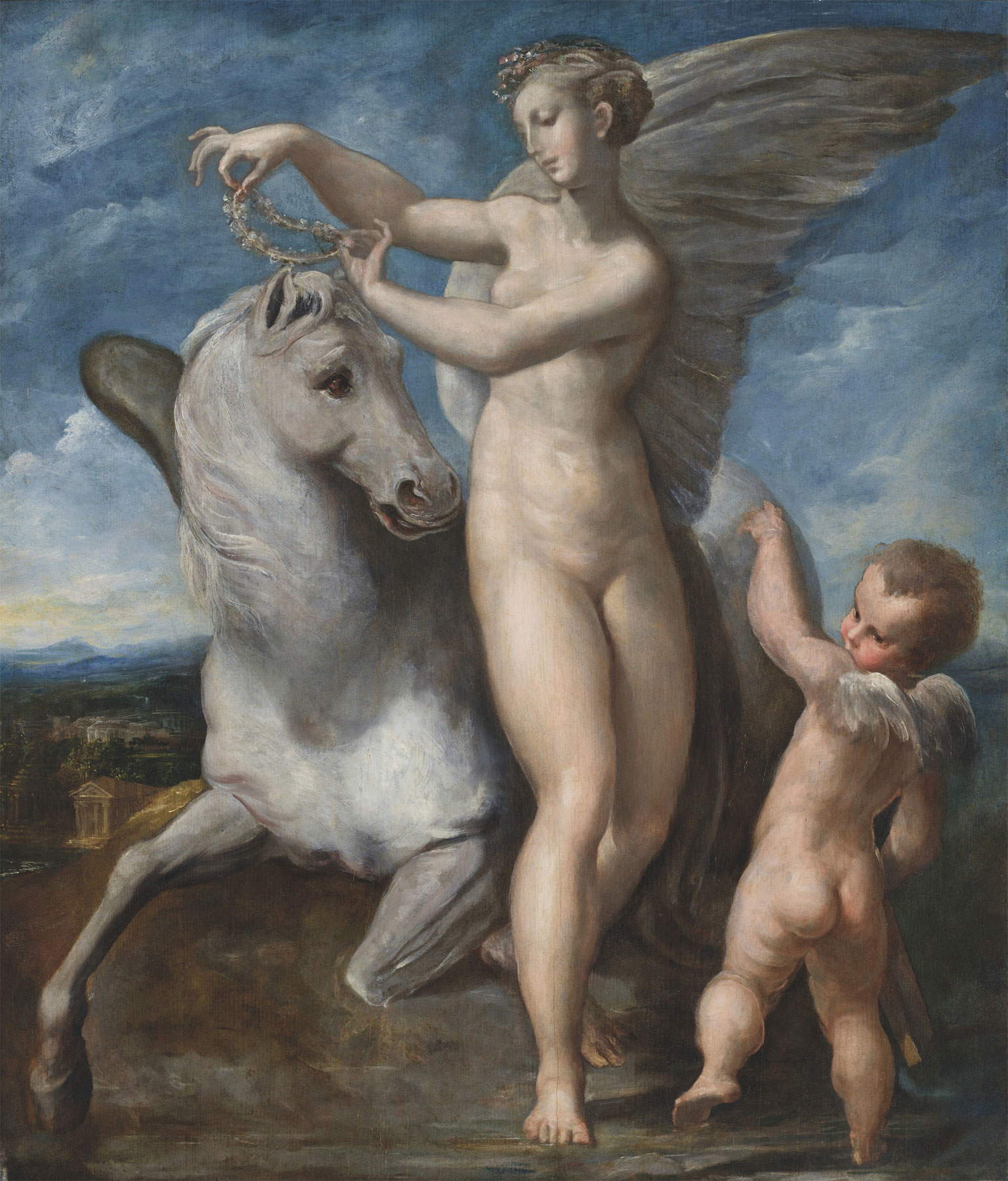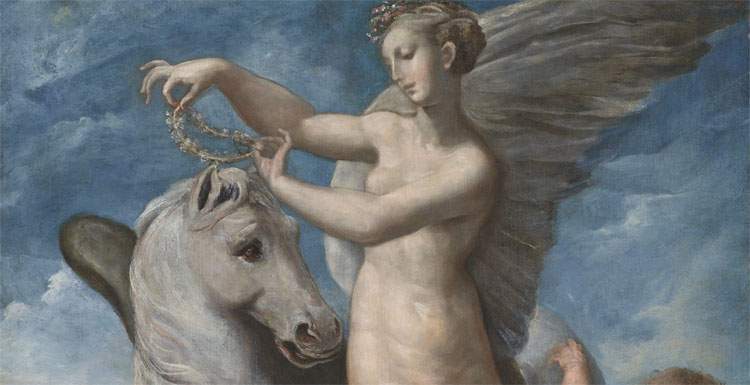The eyes of lovers of 16th-century Emilian art are set on Christie’ s Old Masters Evening Sale to be held in London on July 8: a masterpiece by Parmigianino (Girolamo Francesco Maria Mazzola; Parma, 1503 - Casalmaggiore, 1504), Saturn and Phillira, will also be auctioned during the sale, which will start from an estimate of £400-600,000 (€465-698,000).
It is the most important painting by the Parma artist in private hands and has an illustrious history: it is found mentioned as early as 1561 in the inventory of the property of Cavalier Francesco Baiardi (1486-1561), a friend of the painter. In the inventory, drawn up following the nobleman’s death, we find the painting cited as “A painting of a naked woman crowning a Horse with a cherub below bozzata in finished color high or 20 wide or 12 by the hand of Parmesanino.” Traces of the painting are lost for a couple of centuries: it reappears in England in the eighteenth century, in the collection of the painter Joshua Reynolds, in which it is mentioned in 1791. It then passed to the artist’s niece and was later acquired by collector John Julius Angerstein. Following a passage through William Lock’s collection, the work went to auction at Sotheby’s in 1821, and then returned again to Foster’s for sale (twice: in June 1832 and then again in 1833), then again to Christie’s (in 1838), and again to Christie’s in 1933. Following a couple more passages it then ended up in the United States: the current owner purchased it from the Salander-O’Reilly Galleries in New York in the early 2000s.
 |
| Parmigianino, Saturn and Philira (oil on panel, 75.6 x 64.1 cm) |
This is a painting well known to critics: the Italian public, moreover, last saw it live at the major exhibition on Correggio and Parmigianino organized at the Scuderie del Quirinale between March 12 and June 26, 2016. The rather unusual subject is taken from Greek mythology: the protagonist is the god Saturn (or, more precisely, Cronus) who, in the guise of a horse, is depicted together with the nymph Filira (presented in the act of crowning or embracing him) and Cupid, god of love. The artist had to draw inspiration from the Fabulae of Hyginus, where we read that “when Saturn hunted Jupiter over all the earth, taking the form of a steed, he lay with Filira, daughter of Oceanus. By him, Philira gave birth to Chiron the centaur.” It is almost certain that the painting was commissioned by Baiardi himself: in fact, a horse appeared in the family coat of arms. Of the painting, moreover, several preparatory studies are also known (indeed: no other story with a mythological theme in Parma’s production has been studied as thoroughly as this one by its author): in short, it is one of the artist’s most famous and studied works, even if it was rediscovered only recently, that is, in 1991 (before that, the work was known only from documents and drawings). Moreover, at the time the painting came back to light, it was found to be covered by extensive repainting, made by the hand of Joshua Reynolds himself.
It is curious to note that in the Baiardi inventory the work is cited as a “finished color sketch”: the painting’s entry in the auction catalog states that it is a “category of paintings that the artist seems to have invented and developed. From the evidence of both similar examples and technical analysis, the figures and landscape were fully realized, while the sky and foreground parts were only sketched. The later repainting may therefore have been done with the aim of making the painting more ”complete," and thus more in accord with eighteenth-century taste, and consequently better saleable.
It would be really nice if, in the year of Parma as Italian Capital of Culture, efforts were made to return the painting to Italy: the state or some private party (the City of Parma, on the other hand, would be unlikely to be able to do so) could purchase the work to make it available to the city. It would be a fitting crowning achievement for the year in which Parmigianino’s city was capital of culture. And that is what many are beginning to ask for more and more insistently. Among others is historian Dario Pasquini who, as the Gazzetta di Parma reports, has sent a message of warning and an appeal to Cultural Heritage Minister Dario Franceschini, Regional President Stefano Bonaccini and Mayor Federico Pizzarotti. And the Parma daily also reports Mayor Federico Pizzarotti’s wish: “I hope that the state, or some wealthy private person, will consider the possibility of buying the work and then making it available to the city so that it can be displayed for all to see.” One can only join all appeals.
 |
| Masterpiece by Parmigianino goes up for auction July 8. Let's make sure it returns to Italy! |
Warning: the translation into English of the original Italian article was created using automatic tools. We undertake to review all articles, but we do not guarantee the total absence of inaccuracies in the translation due to the program. You can find the original by clicking on the ITA button. If you find any mistake,please contact us.